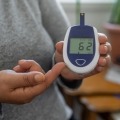Exercising Well with Diabetes Using Automated Insulin Delivery
 By Dr. Laurel H. Messer and Dr. Michael C. Riddell
By Dr. Laurel H. Messer and Dr. Michael C. Riddell
Dr. Messer and Dr. Riddell give tips on how to use AID devices to manage blood glucose levels while exercising
Exercise is an important part of a healthy lifestyle, and it would be great if someone could write a perfect rule-book for doing it well with diabetes. Unfortunately, everybody is little different with respect to how their body responds to exercise, and every type of exercise will cause different types of glucose responses—at times a high glucose, sometimes a low glucose, and sometimes no clear response at all until hours later. Predictive low glucose suspend systems and automated insulin delivery (AID) devices (aka hybrid closed-loop systems) can help keep glucose levels stable during and after exercise, but they come with important differences for managing exercise as compared to devices like a sensor-augmented pump.
Predictive low-glucose suspend systems (Tandem Basal IQ, MiniMed 670G in Manual Mode and 640G) and AID systems (MiniMed 670G and Tandem Control-IQ) all have the ability to decrease or suspend basal insulin delivery for low glucose levels to prevent hypoglycemia. However, these features are typically not as effective during exercise as they are at rest since insulin sensitivity is much higher during exercise (2). Overall, the predictive algorithms used to suspend insulin before going low work well overnight after exercise but tend not to work so well during exercise.
A more successful feature for exercise management that is unique to AID systems is the ability to set a higher glucose target, sometimes called a temporary or preset target, before starting the activity. On the 670G system, this is called the Temp Target (the algorithm targets 150 mg/dl instead of 120 mg/dl). On the Control-IQ system, this is called the Exercise Activity feature (the system targets 140-160 mg/dl versus 112.5-160 mg/dl). Read more about the Exercise Activity feature of Control-IQ from Kerri Sparling here. In Loop and AndroidAPS, you can set the target yourself, and for many people, setting it somewhere between 150-160 mg/dL seems reasonable for exercise. For the purpose of this article, we will call these features the “AID exercise setting.”
Here are some factors to consider when using AID to help with blood glucose management during exercise:
How do I use AID for prolonged aerobic versus shorter anaerobic exercise?
For exercise that causes glucose levels to drop (typically prolonged aerobic exercise activities like walking, jogging, cycling and just plain shopping!), try setting the AID exercise setting 60 to 90 minutes before the start of the activity. While this may seem like a long time to be in an exercise setting before doing any exercise, evidence from a few carefully conducted studies support this strategy. This will cause less insulin to be circulating in the body during exercise, making it less likely that glucose levels will drop substantially during the activity. Make sure to cancel these settings as soon as the exercise is done so that insulin levels can begin to rise before you eat!
For very high intensity aerobic and anaerobic activities (like interval training, mixed martial arts, heavy weight training and sprinting) try leaving the AID in a non-exercise setting first to see what happens to your glucose levels. Chances are you don’t need less insulin in circulation when you do these types of activities since adrenaline and other hormones help to boost your glucose levels. In cases where glucose levels tend to rise after these activities, the AID systems tend to work well on their own in bringing glucose levels back to range. If on the other hand, if you find yourself developing a low blood sugar with these types of sports, you can always try the AID Exercise Settings about 60 minutes before you start them.
What glucose levels should I aim for when exercising with AID?
Most athletes with diabetes aim for a glucose level that is slightly elevated to help prevent low blood sugar. The glycemic targets for starting (and ending) exercise are generally 125-180 mg/dL according to one consensus document. A lower starting glucose level works well for very intensive exercise that lasts less than 30 minutes, while a higher pre-exercise glucose level works best for more moderate activities that will last longer. Learning where you feel the safest, and strongest, for all the various types of activity you do should be part of your diabetes and exercise journey.
Post-exercise high blood sugar is a common occurrence with more intense and competitive activities. AID systems will likely manage these highs effectively, and usually the rise in glucose is only temporary. In some cases, a person with diabetes may want to give a correction dose of insulin after intense exercise if the high tends to last more than half an hour without starting to drop back down with the AID system. It may be a good idea to reduce the amount of insulin for this correction bolus, such as 50% of the dose calculation to reduce the chance of going low later. Cooling the body down through light walking and drinking water may help bring the glucose down.
What if I just ate a meal?
You may need to consider using AID exercise settings differently if you just ate before the start of exercise. This is because eating while using AID will often push insulin levels up a little before the exercise starts, which will result in having more insulin ‘on board’ (in the body) during exercise. Try to eat meals three or more hours before the start of any prolonged exercise to ensure that insulin and glucose are more stable. If you have to eat, try a low carb or low glycemic snack so that glucose won’t rise too much before you start exercising. Snacking a little during the exercise (20-30 grams of carbohydrate along with some protein) should be fine if the AID exercise setting is on.
To carb or not to carb?
It is common for a person with diabetes to eat carbs immediately prior to exercise in order to keep glucose levels from dropping, though this is not necessarily a good idea with AID. AID systems will likely respond to the sudden rise in glucose levels by giving extra insulin before and during exercise, either by increasing basal rates or delivering an automatic correction dose of insulin (like with Control IQ and future systems).
In order to prevent this extra insulin prior to exercise, it is likely better to NOT ingest extra carbohydrates, and in particular simple carbohydrates (sugar), if glucose levels are not low prior to the activity. Using the AID exercise settings as discussed above, and only eating carbs during activity if the glucose is trending low, are likely better approaches to avoiding lows during exercise. If for performance reasons you need to eat carbohydrates (e.g., half marathon, long bike ride, etc.), then the consumption of up to 60 grams per hour, in smaller intermittent dosages, is what many seasoned athletes typically do even if they are on AID.
How do I avoid delayed hypoglycemia after exercise?
Glucose levels can dip low anytime (up to 24 hours) after the exercise has ended, but this often occurs about 3-6 hours later, sometimes when you may be sleeping. This is due to muscles being more insulin sensitive and replenishing stored glucose (i.e. glycogen) that was burned during the activity. Using AID in an exercise setting for up to 12 hours after a very prolonged and strenuous exercise session will help prevent this from happening if it appears to be a regular occurrence. Sensor-augmented pump users can also do this by using temporary basal rates (at 50-80% of usual rate) for up to 12 hours. For more typical activities that last less than an hour, the AID exercise setting does not need to remain on after the exercise is done.
Using these settings for hours after prolonged strenuous exercise can also reassure the person that he or she does not need to eat extra carbs at bedtime to avoid low glucose levels overnight. This will also help prevent over-snacking which can potentially cause high glucose levels after exercise or weight gain.
The universal diabetes secret: (Trial and Error)
You already know the secret to all of diabetes management—trial and error. The tips offered here may provide some new ideas to try to help you exercise well with diabetes. Keep trying new things and see what works best for you!
Interested in reading more about exercise and AID? Check out these studies!
Exercise management in type 1 diabetes: a consensus statement.
Performance of an Artificial Pancreas System for Young Children with Type 1 Diabetes.
Closing the Loop on Exercise in Type 1 Diabetes.
This article is part of a series on time in range.
The diaTribe Foundation, in concert with the Time in Range Coalition, is committed to helping people with diabetes and their caregivers understand time in range to maximize patients' health. Learn more about the Time in Range Coalition here.
About Dr. Messer
Dr. Laurel H. Messer is a nurse scientist and certified diabetes educator at the Barbara Davis Center for Diabetes, University of Colorado School of Medicine, Aurora, CO. She has spent the last 15 years studying how to best utilize new diabetes technologies, and remembers fondly teaching families to wrap up their corded CGM system in a plastic shower bag for bathing. Ok, not that fondly, but look how far we have come! Dr. Messer works with the Barbara Davis Center PANTHER team (Practical Advanced Therapies for diabetes), conducting clinical research trials on promising technologies to make life better for children, adolescents, and adults living with type 1 diabetes. Get in touch at Laurel.Messer@cuanschutz.edu.
About Dr. Riddell
Dr. Michael Riddell is a Full Professor in the School of Kinesiology and Health Science at York and Senior Scientist at LMC Diabetes and Manna Research. His global interests center on the effects of exercise and stress on diabetes and metabolism.
Dr. Riddell has published over 160 peer-reviewed journal articles, 21 book chapters, and one patient guidebook on the metabolic and hormonal responses to exercise and stress in diabetes. He has authored several international guidelines on exercise and diabetes and he engages with several community-based diabetes sports and exercise programs that enhance diabetes self-care behaviors in people living with diabetes. He has over 200 invited scholarly talks and keynotes at various academic, scientific, professional and public events.
A recipient of the Faculty of Health Dean’s Established Career Research Award, Riddell currently holds research grants from various government agencies, foundations and industry partners totaling ~$3M. His research team uses a broad selection of innovative models and techniques to discover how regular exercise, stress and diabetes influence metabolism and health.







